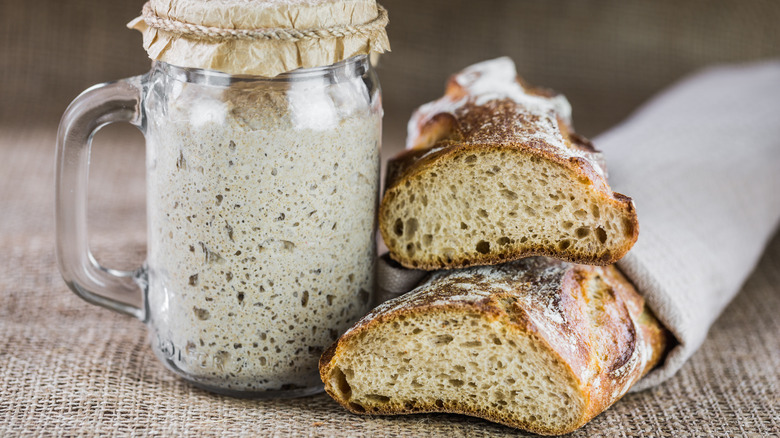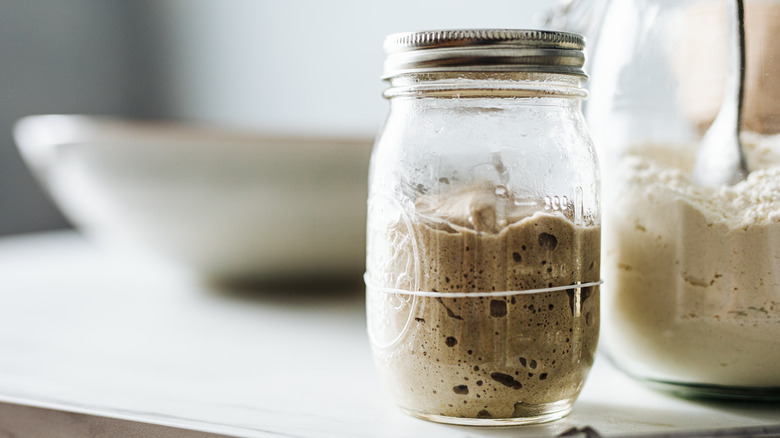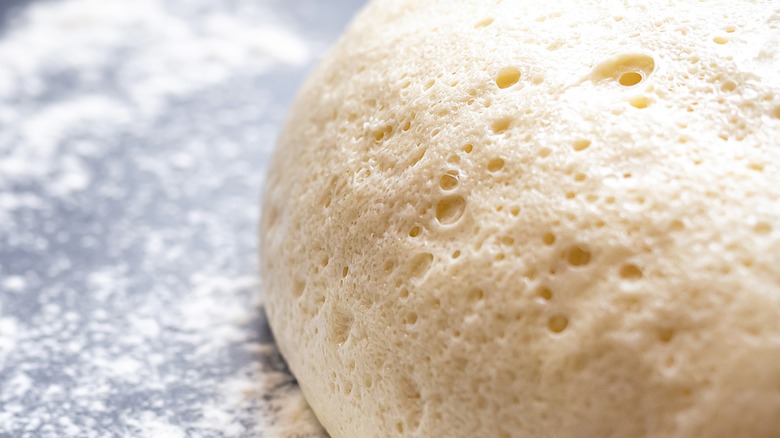The Sourdough Mistake That Just Takes Some Patience To Fix
It takes a lot of patience to successfully bake sourdough bread. Between creating a sourdough starter and letting it mature (which can take a few weeks), and then mixing the dough (which can take another day or two to cold ferment so it develops that deep, sour flavor), getting to the point of finally baking a loaf can seem to take forever.
It would be best if you had a bubbly, mature starter to rise a loaf of bread properly. But this can take a long time to achieve — it could be a month before you're ready to bake a loaf of no-knead sourdough bread. So you'd be forgiven for maybe being a bit impatient and using the starter before it has reached peak leavening powers. Prematurely baking, however, risks ending up with a flat, dense disc of bread instead of a well-risen loaf of bread with a craggy crust and a light, open, airy crumb.
Making a sourdough starter from scratch can take anywhere from one to several weeks, depending on a variety of factors including water, ambient temperature, and even the kind of flour you use. By exercising some patience and proper maintenance, you can develop a robust starter that gives you fresh sourdough bread for years to come.
Patience is key for your sourdough starter
You can use any flour you want when making a sourdough starter from scratch, but a 50-50 mix of whole-meal flour and refined all-purpose or white bread flour will jumpstart the process. Establishing your starter begins with consistent daily feedings. To keep the feeding times sane, use two scales and two jars. This way you can simply transfer half of the starter to the new jar and add equal weights of flour and water. Keep your starter, with the jar lid loose, on a kitchen counter. As the flour and water mix, the yeasts in the flour are activated, causing the mixture to bubble and expand. This fermentation is where the sour flavor comes from.
If you're not sure your starter is mature enough to support a loaf of bread, there are several ways to determine its readiness. If, after a feeding, your starter doubles in volume in about four hours, it's most likely ready to use in a sourdough bread recipe. You can also determine its readiness by dropping a blob of starter in a cup of warm water. If it floats, it's ready to be used. This method is slightly less reliable than if it doubles in volume, especially if you're using whole wheat or rye flours, as they can be ready to use and not float.
Don't throw out discarded starter
Maintaining your sourdough starter requires discarding about half of it before feeding it with more flour and water. You might ask why you're tossing out your unfed starter every day, and it's because a typical home baker can't make enough bread to not discard some of the starter. If you kept it all, you would eventually have so much, that you would need to feed it obscene amounts of flour per day to keep it alive. The old starter will eventually ferment so much that it'll produce bad kinds of acids and bacteria, and eventually die.
Still, don't toss that discarded sourdough starter into the trash. It can be put to good use. Offer some to friends and family who might be interested in having their own sourdough starter. You can even dry it out by spreading it on sheets of parchment paper to keep it indefinitely. You can bring it back to life with equal parts (by weight) of lukewarm water and flour.
Crackers are an easy and quick way to use up sourdough discards — they're deeply savory with the tang of sourdough. You can also use sourdough discards for pizza dough, which will give you a light, open crust. You can use starter discards for the scrummiest sourdough whole wheat pancakes and waffles.


